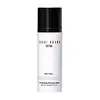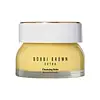What's inside
What's inside
 Key Ingredients
Key Ingredients

No key ingredients
 Benefits
Benefits

 Concerns
Concerns

 Ingredients Side-by-side
Ingredients Side-by-side

Water
Skin ConditioningNeopentyl Glycol Diheptanoate
EmollientPEG-4 Diheptanoate
EmulsifyingGlycerin
HumectantBis-Diglyceryl Polyacyladipate-2
EmollientPentaerythrityl Tetraethylhexanoate
EmollientButyrospermum Parkii Butter
Skin ConditioningPhenyl Trimethicone
Skin ConditioningPolyethylene
AbrasiveCetearyl Alcohol
EmollientDimethicone
EmollientTocopheryl Acetate
AntioxidantCetyl Alcohol
EmollientGlyceryl Stearate
EmollientOenothera Biennis Oil
EmollientCaffeine
Skin ConditioningRosmarinus Officinalis Leaf Oil
MaskingAnthemis Nobilis Flower Extract
MaskingSqualane
EmollientPelargonium Graveolens Flower Oil
MaskingCitrus Grandis Peel Oil
MaskingEpilobium Angustifolium Flower/Leaf/Stem Extract
Skin ConditioningCitrus Aurantium Amara Peel Oil
Skin ConditioningAstrocaryum Murumuru Seed Butter
EmollientSodium Hyaluronate
HumectantSapindus Mukorossi Fruit Extract
Skin ConditioningCaesalpinia Spinosa Gum
Skin ConditioningMorinda Citrifolia Fruit Extract
Skin ConditioningHydroxyethyl Acrylate/Sodium Acryloyldimethyl Taurate Copolymer
Emulsion StabilisingSorbitan Stearate
EmulsifyingPEG-40 Stearate
EmulsifyingButylene Glycol
HumectantDicetyl Phosphate
EmulsifyingCeteth-10 Phosphate
CleansingXanthan Gum
EmulsifyingLecithin
EmollientPolysorbate 60
EmulsifyingPropylene Glycol Stearate
Skin ConditioningPolysorbate 20
EmulsifyingSorbitan Laurate
EmulsifyingLinalool
PerfumingGeraniol
PerfumingCitronellol
PerfumingLimonene
PerfumingCitral
PerfumingTin Oxide
AbrasivePropylene Glycol Laurate
Skin ConditioningCoffea Arabica Seed Extract
MaskingEthylhexylglycerin
Skin ConditioningPentaerythrityl Tetra-Di-T-Butyl Hydroxyhydrocinnamate
AntioxidantTetrasodium EDTA
Phenoxyethanol
PreservativePotassium Sorbate
PreservativeMica
Cosmetic ColorantCI 77891
Cosmetic ColorantCI 75470
Cosmetic ColorantCI 77499
Cosmetic ColorantCI 77492
Cosmetic ColorantCI 77491
Cosmetic ColorantWater, Neopentyl Glycol Diheptanoate, PEG-4 Diheptanoate, Glycerin, Bis-Diglyceryl Polyacyladipate-2, Pentaerythrityl Tetraethylhexanoate, Butyrospermum Parkii Butter, Phenyl Trimethicone, Polyethylene, Cetearyl Alcohol, Dimethicone, Tocopheryl Acetate, Cetyl Alcohol, Glyceryl Stearate, Oenothera Biennis Oil, Caffeine, Rosmarinus Officinalis Leaf Oil, Anthemis Nobilis Flower Extract, Squalane, Pelargonium Graveolens Flower Oil, Citrus Grandis Peel Oil, Epilobium Angustifolium Flower/Leaf/Stem Extract, Citrus Aurantium Amara Peel Oil, Astrocaryum Murumuru Seed Butter, Sodium Hyaluronate, Sapindus Mukorossi Fruit Extract, Caesalpinia Spinosa Gum, Morinda Citrifolia Fruit Extract, Hydroxyethyl Acrylate/Sodium Acryloyldimethyl Taurate Copolymer, Sorbitan Stearate, PEG-40 Stearate, Butylene Glycol, Dicetyl Phosphate, Ceteth-10 Phosphate, Xanthan Gum, Lecithin, Polysorbate 60, Propylene Glycol Stearate, Polysorbate 20, Sorbitan Laurate, Linalool, Geraniol, Citronellol, Limonene, Citral, Tin Oxide, Propylene Glycol Laurate, Coffea Arabica Seed Extract, Ethylhexylglycerin, Pentaerythrityl Tetra-Di-T-Butyl Hydroxyhydrocinnamate, Tetrasodium EDTA, Phenoxyethanol, Potassium Sorbate, Mica, CI 77891, CI 75470, CI 77499, CI 77492, CI 77491
Glycerin
HumectantOlea Europaea Fruit Oil
MaskingLimonene
PerfumingPolyglyceryl-10 Behenate/Eicosadioate
EmulsifyingGlyceryl Behenate/Eicosadioate
EmollientPolyglyceryl-3 Beeswax
EmulsifyingPEG-10 Sunflower Glycerides
EmollientGlyceryl Stearate Se
EmulsifyingCitrus Aurantium Dulcis Peel Cera
EmollientPolydecene
Skin ConditioningBeta-Carotene
Skin ConditioningPotassium Stearate
CleansingBenzyl Alcohol
PerfumingLinalool
PerfumingAnise Alcohol
PerfumingCitronellol
PerfumingAminomethyl Propanediol
BufferingGlycerin, Olea Europaea Fruit Oil, Limonene, Polyglyceryl-10 Behenate/Eicosadioate, Glyceryl Behenate/Eicosadioate, Polyglyceryl-3 Beeswax, PEG-10 Sunflower Glycerides, Glyceryl Stearate Se, Citrus Aurantium Dulcis Peel Cera, Polydecene, Beta-Carotene, Potassium Stearate, Benzyl Alcohol, Linalool, Anise Alcohol, Citronellol, Aminomethyl Propanediol
Ingredients Explained
These ingredients are found in both products.
Ingredients higher up in an ingredient list are typically present in a larger amount.
Citronellol is used to add fragrance/parfum to a product. It is often derived from plants such as roses. In fact, it can be found in many essential oils including geranium, lavender, neroli, and more. The scent of Citronellol is often described as "fresh, grassy, and citrus-like".
Since the Citronellol molecule is already unstable, Citronellol becomes irritating on the skin when exposed to air.
Citronellol is a modified terpene. Terpenes are unsaturated hydrocarbons found in plants. They make up the primary part of essential oils.
Citronellol is not able to be absorbed into deeper layers of the skin. It has low permeability,
Citronellol is also a natural insect repellent.
Learn more about CitronellolGlycerin is already naturally found in your skin. It helps moisturize and protect your skin.
A study from 2016 found glycerin to be more effective as a humectant than AHAs and hyaluronic acid.
As a humectant, it helps the skin stay hydrated by pulling moisture to your skin. The low molecular weight of glycerin allows it to pull moisture into the deeper layers of your skin.
Hydrated skin improves your skin barrier; Your skin barrier helps protect against irritants and bacteria.
Glycerin has also been found to have antimicrobial and antiviral properties. Due to these properties, glycerin is often used in wound and burn treatments.
In cosmetics, glycerin is usually derived from plants such as soybean or palm. However, it can also be sourced from animals, such as tallow or animal fat.
This ingredient is organic, colorless, odorless, and non-toxic.
Glycerin is the name for this ingredient in American English. British English uses Glycerol/Glycerine.
Learn more about GlycerinLimonene is a fragrance that adds scent and taste to a formulation.
It's found in the peel oil of citrus fruits and other plants such as lavender and eucalyptus. The scent of limonene is generally described as "sweet citrus".
Limonene acts as an antioxidant, meaning it helps neutralize free radicals.
When exposed to air, oxidized limonene may sensitize the skin. Because of this, limonene is often avoided by people with sensitive skin.
The term 'fragrance' is not regulated in many countries. In many cases, it is up to the brand to define this term. For instance, many brands choose to label themselves as "fragrance-free" because they are not using synthetic fragrances. However, their products may still contain ingredients such as essential oils that are considered a fragrance.
Learn more about LimoneneLinalool is a fragrance and helps add scent to products. It's derived from common plants such as cinnamon, mint, citrus, and lavender.
Like Limonene, this ingredient oxidizes when exposed to air. Oxidized linalool can cause allergies and skin sensitivity.
This ingredient has a scent that is floral, spicy tropical, and citrus-like.
Learn more about Linalool